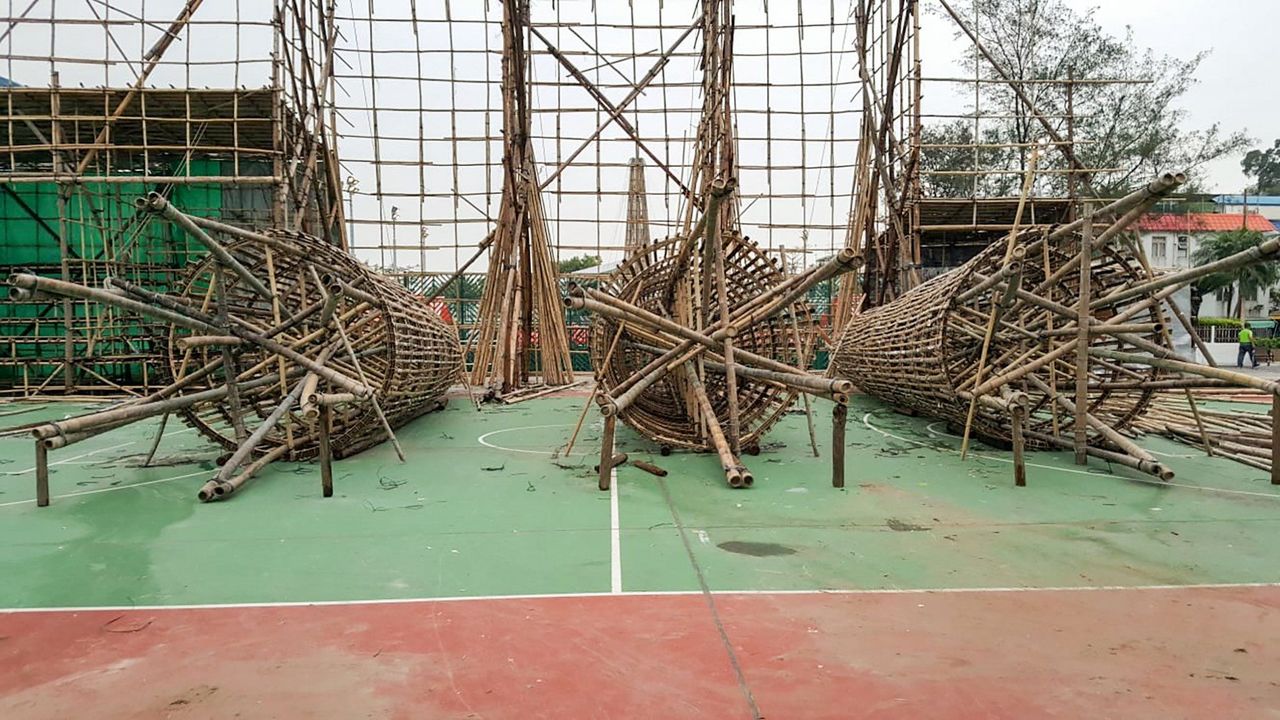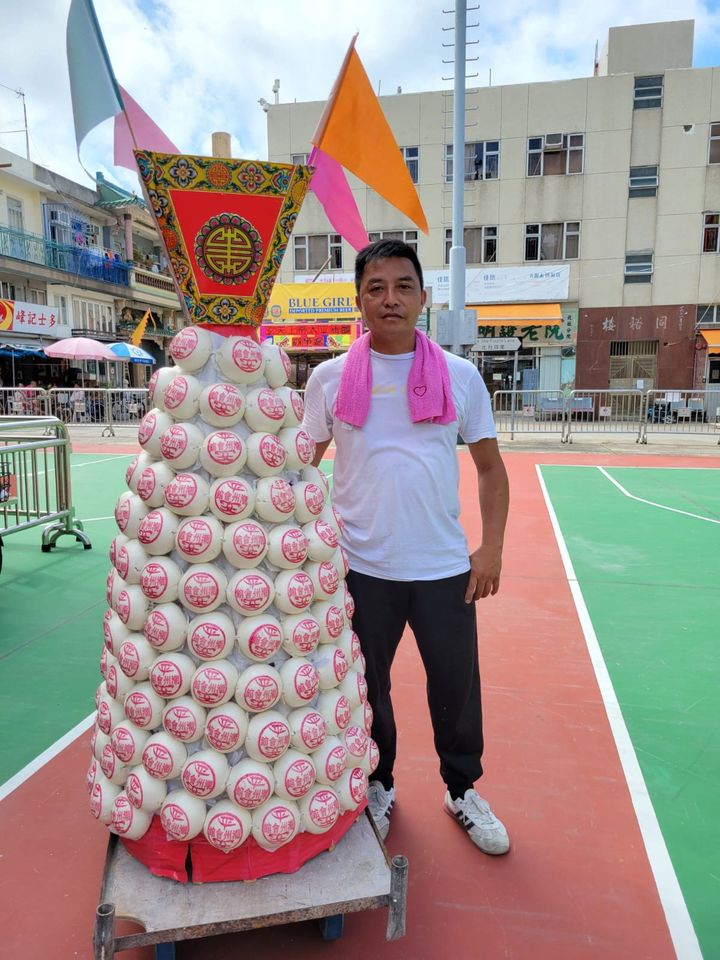Hong Kong News

Builder vows to keep making bamboo bun towers for future Cheung Chau festivals
The only contractor in Hong Kong with the skills to build bamboo bun towers has pledged to continue the tradition in the future after manpower shortages forced his team to pull out of their construction this year.
Chan Kam-yuen, who has more than 40 years’ experience in building the traditional towers and inherited the secrets from three generations of his family, spoke out on Tuesday after the replacement metal towers another contractor had created for the annual festival in Cheung Chau were much shorter than usual.
The news that the towers had gone from the normal height of about 50 feet (15.25 metres) to just 15 feet sparked criticism from Cheung Chau residents and on social media.
Chan said: “We are sorry we can’t build the towers this year and that the towers have been downsized.”
 Three completed bamboo bun towers.
Three completed bamboo bun towers.
The contractor, who is in his fifties and grew up in Cheung Chau, explained he and his brother had suffered health problems and his nephew was too busy with his own work schedule to fit in the job for the festival, which is being held for first time since it was suspended in 2020 because of the Covid-19 pandemic.
The Hong Kong Cheung Chau Bun Festival Committee said on Monday that Chan’s estimate to build the towers had gone up from HK$80,000 (US$10,233) to HK$130,000 but they had still agreed to pay.
Chan said he had held talks with the committee, but did not hear back from them for a month and, when he did, “it was too late to do all the work”.
But the traditional tall towers did make an appearance, but only on three banners illustrating their actual size which were used as a backdrop to the cut-down versions.
The towers were built for ritual purposes at the Bun Carnival, which runs from April 16 to May 27 and features activities like a piu sik – a “floating colour” parade – and a bun scrambling race, scheduled to be held on Friday.
A 46-foot steel tower, decorated with white plastic buns and scaled by a dozen climbers at the stroke of midnight as the high spot of the carnival, was not affected.
Wong Shing-chau, the director of the piu sik parade, said local residents had complained the downsized towers looked “nowhere comparable to the ones before”.
Yung Chi-ming, the chairman of the committee, said the organisation would welcome Chan’s return if an agreement could be struck for next year.
He added, however, that the festival needed to “have more than one string to their bow”.
Chan also said he was open to working for the festival again if the festival worked out any difficulties it might have.
“This is, of course, not a moneymaking business, but whether it’s worth carrying on depends on one’s values,” he added.
Chan predicted the skills needed to build a bamboo tower would not die out, although not everyone in his family was interested in carrying on the tradition.
 Chan Kam-yuen predicts the skills needed to build a bamboo tower will not die out.
Chan Kam-yuen predicts the skills needed to build a bamboo tower will not die out.
Chan, a decoration worker, said he learned how to make the bamboo structures from his father when he was a child, a craft that originated from his grandfather.
He said normally about eight to 10 family members would come together and assemble different parts of the structures for the festival every year.
“We do not hire outsiders but keep the business within the family,” he added.
He revealed the conical towers were made up of 14 rings, from two feet to eight feet in diameter.
The rings were assembled with around four to six bamboo strips sanded down and slightly bent.
Chan said was taught to use wire to secure the strips in place, similar to bar bending, and criss-crossing the bamboo sticks in the correct position required mechanical knowledge.
He added his team did not make the towers from scratch every year.
“We upcycle the parts from the previous year and take away the worn-out parts, as bamboo gets dampened easily,” he said.
Cho Chau-ming, president of the Hing Lung Street Kai-Fong Association, a community group, said he thought the original bamboo towers were “a signature of the festival” and that it was in everyone’s interest that they returned.
He said that some local people were confused by the change in size and felt the present towers were not as spectacular as the ones they enjoyed in previous years.
Folklore suggests the bun festival, also known as the Cheung Chau Da Jiu Festival, was founded centuries ago to celebrate the end of a plague.











